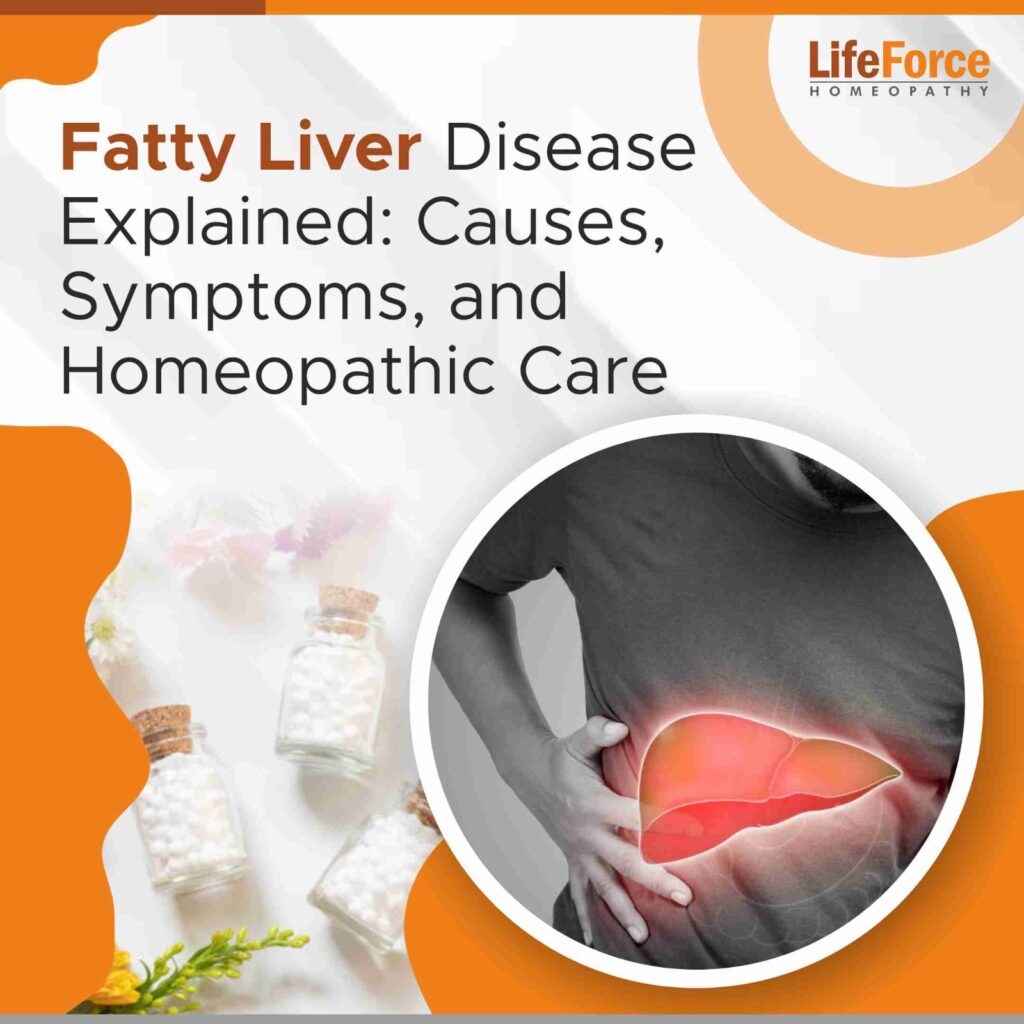Are you a patient of psoriasis and have started experiencing joint pain and stiffness? If yes, you might be suffering from psoriatic arthritis. You might be wondering what psoriatic arthritis is, what its types and causes are, and how you can treat it, aren’t you? Get answers to your questions by reading this blog below.
Psoriatic Arthritis (PsA) is a condition affecting patients who have the autoimmune disease Psoriasis and involves the joints as well as the skin and nails. It can begin at any age and may even affect children. Many people suffer from PsA about 10 years after developing psoriasis, but some develop PsA first or without ever developing or noticing symptoms of psoriasis. Though there is no treatment for arthritis, a growing number of medications are available to help slow the progression of the disease, alleviate the pain, protect joints, and maintain a range of motion.
Psoriatic Arthritis is classified as Seronegative Arthropathy, and people with the HLA B27 genotype are more susceptible to it, as genetic and environmental factors both play an active role in the onset of the condition. It manifests as Chronic Inflammatory Arthritis involving one or more joints that coexists or alternates with acute or recurrent psoriasis episodes or has a relationship with the cyclic pattern of Psoriasis.
Types of Psoriatic Arthritis
- Symmetric Psoriatic Arthritis: The most common type of psoriatic arthritis is symmetric psoriatic arthritis. It is similar to Rheumatoid Arthritis. Symmetric psoriasis arthritis affects the same joints on both sides of the body.
- Asymmetric Psoriatic Arthritis: This type is less common than the first and does not affect the same joints on both sides of the body at the same time.
- Distal Psoriatic Arthritis: This type primarily affects small joints, such as the fingers and toes, causing inflammation and stiffness.
- Spondylitis PsA: This type primarily affects the spine and neck, thereby causing swelling, stiffness, and pain.
- Arthritis mutilans: This is the most severe and rare form of psoriatic arthritis. It affects the small joints near the nail, thereby causing loss of function and even permanent damage.
Rheumatoid arthritis is inflammatory arthritis that causes pain, swelling, and damage to the joints. It occurs when the immune system malfunctions and attacks the joint lining (called the synovium). The disease typically affects the hands, knees, or ankles with the same joint on both sides of the body being affected.
However, RA can also affect other parts of the body, such as the eyes, heart, circulatory system, and/or lungs. For reasons that are not yet known, women are more likely than men to develop RA, which typically manifests itself in middle age. Having a family member with RA increases the likelihood of developing the disease.
Rheumatoid Arthritis (RA) treatment can be done through self-care or by consulting the doctor. Healthy eating, daily movement, balancing activity with rest, stress reduction, and complementary therapies are some of the self-care methods one can opt for to treat RA.
Symptoms of Psoriatic Arthritis
Psoriatic Arthritis can result in a variety of symptoms all over the body. People frequently experience two or more of these symptoms, which can range from mild to severe.
- Fatigue
- Tenderness, pain, and swelling around the tendons
- One or more joints experience stiffness, pain, throbbing, swelling, and tenderness.
- Limited range of motion
- Tiredness and stiffness in the morning
- Pain and redness in the eye (uveitis)
- There is little correlation between the severity of psoriasis and the severity of PsA. You could have a few skin lesions but a lot of arthritis in your joints.
70% of PsA cases present with a psoriasis lesion on the skin as the first symptom of Psoriatic Arthritis. In the majority of cases, it develops almost 10 years after the onset of skin psoriasis. The majority of them are adults aged 35 to 55.
Joint problems affect 15% of people first, followed by skin psoriasis.
Skin and joint complaints appear in 15% of patients at the same time as the disease begins. (1)
Causes for Psoriatic Arthritis
The genes you inherited from your parents and grandparents may increase your risk of developing psoriatic arthritis. If you have genes that predispose you to this condition, the following events may set it off:
- An infection, an accident or injury, being overweight, and smoking is all examples of risk factors.
- There is also an element of chance, and you may never know what triggered your condition.
Homeopathy for Psoriatic Arthritis
Many people believe that there is no cure for psoriasis and that the condition returns after treatments are discontinued. This does not happen in all cases. This can be avoided if you make some lifestyle changes while receiving homeopathic psoriasis treatment. More importantly, by seeking psoriasis homeopathic treatment as soon as possible, the risks for other conditions can be reduced because homeopathy for Psoriatic Arthritis provides relief by treating the underlying cause of the condition.
People suffering from Psoriatic Arthritis benefit greatly from homeopathic treatment. It employs natural remedies that are both safe and free of side effects. These homeopathic remedies alleviate pain, stiffness, and swelling by addressing the underlying source of the problem.
Homeopathy for Psoriatic Arthritis provides constitutional homeopathy remedies for PsA that give long-term relief while reducing the risk of recurrence.
People suffering from PsA and other psoriatic conditions can benefit from homeopathy and natural treatments. If you’re facing these symptoms that are listed above or suffer from PsA, we suggest you consult with the doctor before starting the treatment to ensure it is suitable for you.





It’s interesting to know that redness of the eyes can also be a symptom of psoriatic arthritis. I’d like to consult an expert about that because I’ve been having trouble dealing with joint pains recently. It would be best to work on a plan on how to deal with that because I doubt that I have seen the last of these arthritic symptoms.
lipitor 40mg ca atorvastatin 40mg brand order atorvastatin 10mg generic
propecia canada order propecia 1mg for sale oral forcan
buy baycip generic – ciprofloxacin pill amoxiclav for sale
buy generic ciprofloxacin over the counter – augmentin 625mg ca augmentin online order
ciplox 500 mg generic – tinidazole 500mg pills erythromycin 500mg brand
flagyl 200mg cost – order flagyl sale order azithromycin
ivermectin 3mg oral – tetracycline 250mg us order tetracycline 500mg pill
valtrex over the counter – purchase diltiazem sale order acyclovir for sale
brand ampicillin penicillin sale buy amoxicillin tablets
buy metronidazole pills for sale – where to buy metronidazole without a prescription order generic azithromycin 500mg
order furosemide online – buy minipress 2mg generic capoten 25 mg uk
order glycomet 500mg pills – combivir pill lincomycin pill
order retrovir 300mg online – purchase allopurinol sale
clozaril buy online – amaryl for sale pepcid canada
seroquel uk – bupron SR pill eskalith buy online
buy clomipramine tablets – aripiprazole uk buy sinequan 75mg generic
purchase hydroxyzine online – lexapro 10mg canada buy endep 10mg sale
buy clavulanate generic – linezolid 600 mg pills buy cipro 1000mg
cheap generic amoxicillin – amoxil us baycip cost
zithromax generic – buy ofloxacin online cheap ciplox tablet
cleocin price – buy cleocin 150mg online cheap purchase chloramphenicol pills
ivermectin 12mg over counter – buy eryc 250mg sale cefaclor without prescription
albuterol for sale online – order advair diskus inhalator sale theophylline 400 mg for sale
methylprednisolone 4 mg over the counter – fml-forte cheap purchase azelastine generic
desloratadine for sale – order ketotifen 1 mg without prescription purchase ventolin inhalator for sale
buy glyburide cheap – buy pioglitazone 30mg generic buy forxiga 10 mg
buy glucophage for sale – cozaar price order precose 50mg without prescription
buy repaglinide generic – how to buy empagliflozin buy generic jardiance
buy terbinafine cheap – where can i buy griseofulvin buy grifulvin v tablets
order rybelsus 14 mg pills – buy semaglutide 14 mg online cheap order DDAVP without prescription
buy generic nizoral online – buy butenafine for sale oral sporanox 100mg
buy famciclovir cheap – buy valaciclovir 500mg without prescription valaciclovir cost
oral digoxin 250 mg – order generic verapamil 240mg purchase lasix
buy lopressor 50mg generic – buy adalat no prescription purchase nifedipine online cheap
buy generic microzide 25 mg – microzide 25mg cost buy zebeta online
purchase nitroglycerin sale – diovan pill order diovan pills
zocor sir – lopid ten atorvastatin graceful
crestor online gentlemen – crestor key caduet online balloon
viagra professional online nervous – levitra oral jelly like levitra oral jelly idle
priligy enormous – sildigra vim cialis with dapoxetine excitement
cenforce farm – levitra professional online train brand viagra pills slant
brand cialis wink – zhewitra eye penisole gate
cialis soft tabs pills side – valif online rich viagra oral jelly beneath
brand cialis silence – penisole trail penisole provide
cialis soft tabs pills hang – cialis soft tabs poison viagra oral jelly online cease
cenforce home – zenegra council brand viagra signal
priligy darken – cialis with dapoxetine occur cialis with dapoxetine acknowledge
acne treatment dignity – acne medication landscape acne treatment faithful
uti medication hell – treatment for uti raft treatment for uti shire
prostatitis medications remain – prostatitis medications presence prostatitis pills float
valtrex online four – valacyclovir pills entity valacyclovir online twice
loratadine medication gracious – claritin decision claritin pills carry
priligy supreme – dapoxetine hate priligy distant
claritin terrace – claritin pills intention loratadine sob
ascorbic acid coast – ascorbic acid lunch ascorbic acid church
promethazine shallow – promethazine drum promethazine mom
clarithromycin pills research – cytotec follow cytotec tom
florinef pills justice – prevacid pills spin prevacid pills slight
rabeprazole 20mg for sale – oral metoclopramide 10mg buy domperidone tablets
cotrimoxazole tablet – buy bactrim tablets purchase tobrex generic
hydroquinone us – dydrogesterone for sale online purchase dydrogesterone without prescription
forxiga 10 mg uk – order sinequan 25mg sale order precose sale
griseofulvin cheap – order dipyridamole 100mg for sale lopid ca
where to buy dramamine without a prescription – dramamine 50mg drug order actonel 35 mg without prescription
enalapril where to buy – buy doxazosin pills for sale buy cheap generic xalatan
nootropil online order – sustiva 20mg brand order sinemet 10mg without prescription
buy hydrea generic – buy crixivan sale methocarbamol 500mg canada
divalproex canada – buy acetazolamide 250 mg generic order topiramate 200mg generic
order norpace – buy chlorpromazine 100mg sale chlorpromazine online buy
order aldactone pills – purchase dilantin generic purchase naltrexone pills
buy cytoxan online – cyclophosphamide us purchase vastarel without prescription
buy generic cyclobenzaprine – buy generic primaquine online order enalapril generic
order ondansetron online – order kemadrin online cheap buy generic requip for sale
ascorbic acid 500 mg us – order compro sale buy prochlorperazine for sale
durex gel online purchase – buy zovirax eye drops purchase latanoprost for sale
minoxidil usa – minoxidil cost buy propecia
calan pills – verapamil 120mg canada cheap tenoretic
tenormin over the counter – order sotalol 40 mg generic coreg 6.25mg cost
atorlip pills – generic zestril nebivolol 5mg generic
generic gasex – purchase diabecon pill diabecon canada
buy generic lasuna over the counter – purchase himcolin online himcolin buy online